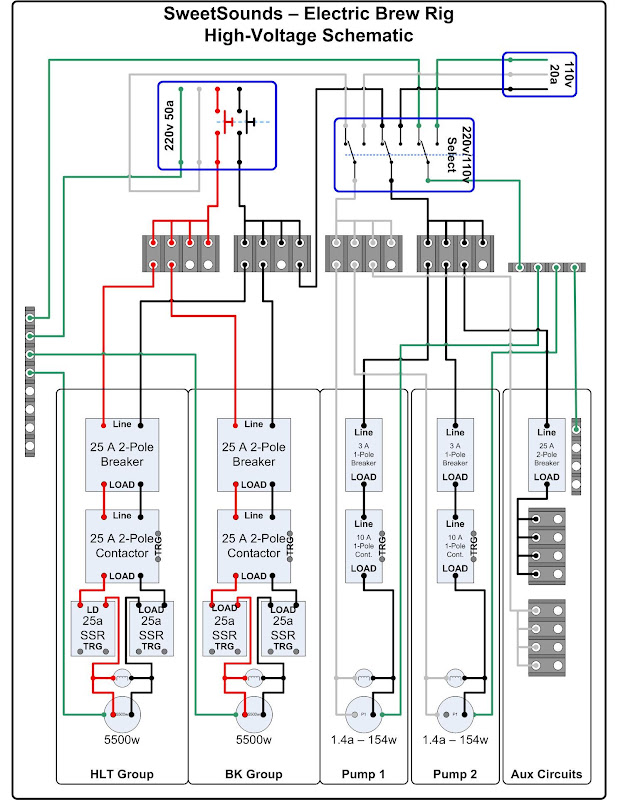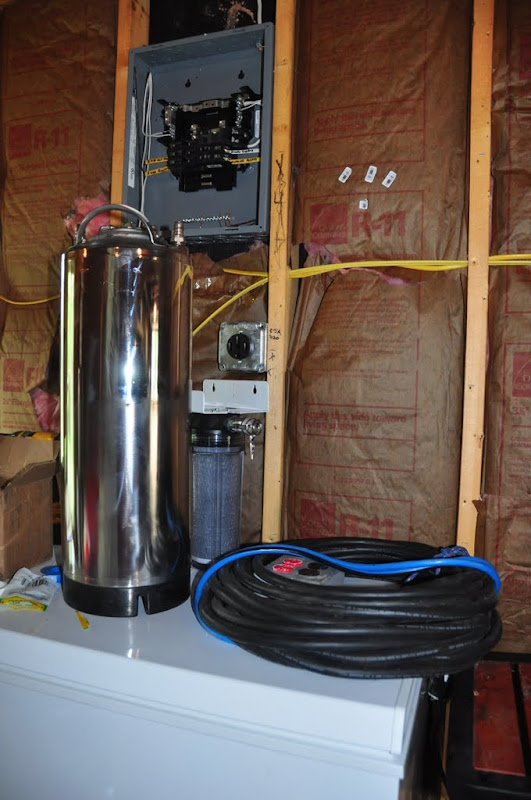SweetSounds
Well-Known Member
This is the high voltage schematic for my coming electric project. Peer review is the best way to find those little things that slip away when you're trying not to cross the streams, so - please have a look and see if I missed anything!
Background - It will be powered by a 4-wire 50 amp 220v GFCI protected circuit at home. But, I also want to be able to run it from any 220v circuit if I travel with it. Since a lot of the 220 I run into is no-neutral 3-wire (Range plugs, for instance) I have added a switch before the 110v equipment to break it off to another separate 110v circuit. In other words, I will be able to switch the 110v stuff from a dedicated 110v feed to the 4-wire 220 feeding the rest of the panel, when available.
SSR and contactor triggers are not in this drawing - I'm still working on the low voltage control part of the system. (The drawings are still on paper )
)
Link to the high resolution version you can actually read:
The schematic:

Just for fun, here's where she'll feed when it's at home!

Background - It will be powered by a 4-wire 50 amp 220v GFCI protected circuit at home. But, I also want to be able to run it from any 220v circuit if I travel with it. Since a lot of the 220 I run into is no-neutral 3-wire (Range plugs, for instance) I have added a switch before the 110v equipment to break it off to another separate 110v circuit. In other words, I will be able to switch the 110v stuff from a dedicated 110v feed to the 4-wire 220 feeding the rest of the panel, when available.
SSR and contactor triggers are not in this drawing - I'm still working on the low voltage control part of the system. (The drawings are still on paper
Link to the high resolution version you can actually read:
The schematic:

Just for fun, here's where she'll feed when it's at home!










